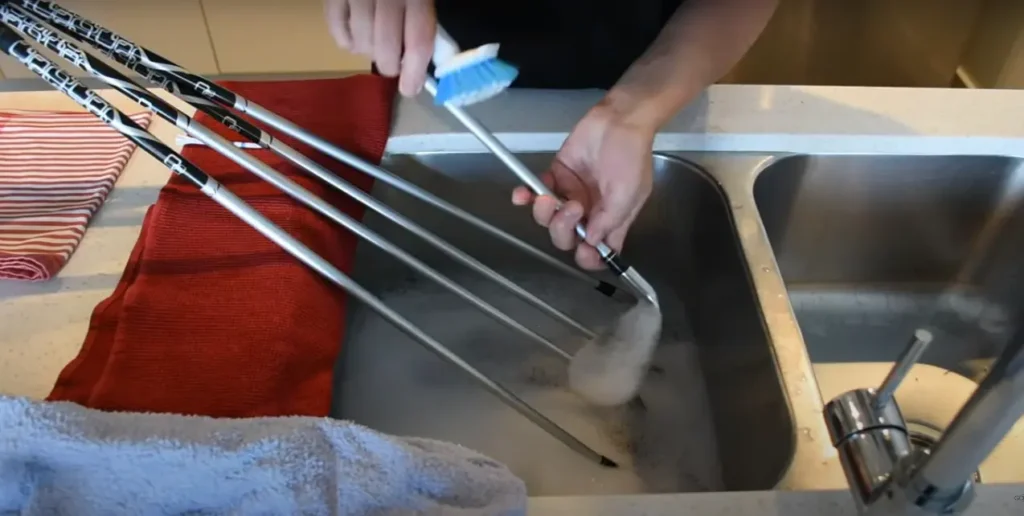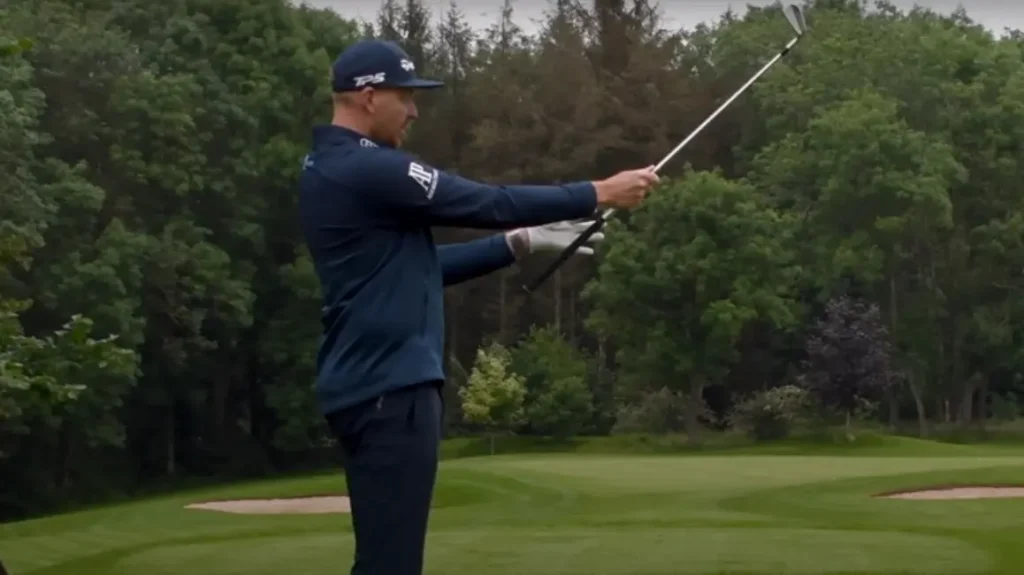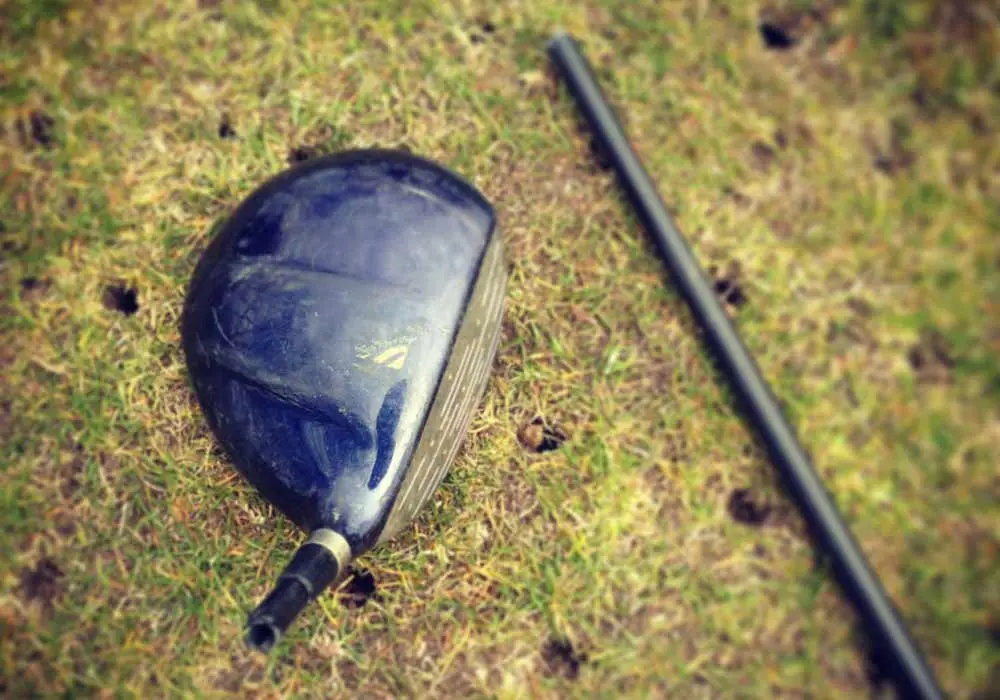Golf, an activity characterized by precise precision and graceful finesse, requires perfection and attention to detail. That’s why golfers spend hours perfecting their swings, refining putting techniques, and honing their overall golf skills. Unfortunately, in their pursuit for excellence, some aspects of this sport often remain forgotten i.e., playing golf in a moderate temperature. That’s because extreme weather conditions can damage your cherished golf clubs. So, let’s discuss the question, “Will golf clubs break in cold weather?”
We’ll explore the science behind weather affecting the quality of your golfing equipment while sharing some crucial tips to protect your prized possessions during those frosty outings. So grab yourself a hot cocoa and let’s unveil winter golf’s mysteries together.

6 Best Winter Golf Accessories
Winter isn’t typically considered the best time for golfing. However, there’s no stopping your passion for golf, my friend. If you want to explore the green with your pals this winter, make sure you’re equipped with the right golf accessories for the weather. In this section, we will refer you to the best winter golf accessories out there for men and women alike. So, click on these links and check out the amazing equipment you can find on the fabulous site of Amazon:
| Set of Three Headcovers | More Information |
| Womens Designer Golf Club Covers 4 Pack – Weather/Moisture Resistant Protection | More Information |
| Winter Golf Gloves, Pair Men | More Information |
| Golf Gloves for Women – Perfect for Winter Golf Gloves | More Information |
| Men’s Complete Golf Set | More Information |
| Women’s Ladies Complete Golf Set | More Information |
The Science of Cold Weather
Let’s delve further into the discussion of how cold temperatures influence golf clubs. These precision-engineered tools are made of different materials, featuring steel as the most crucial component along with graphite. Let’s consider these materials as living entities that react differently when exposed to different temperatures. So, will golf clubs break in cold weather? We’ll find out here:
How Temperature Affects Materials
As temperatures drop, metal components respond by contracting. Just as they expand when exposed to high temperatures, they tend to contract in cold environments. It’s like watching something momentarily shrinking from its original size. Yet this seemingly minor transformation has an enormous impact on your club and its performance on the course. When cold air strikes your club, it can alter its very form, and such an alteration throws its balance off and alters its performance significantly.
Effects on Club Flexibility
Now, let’s shift our attention to another key component of golf club dynamics, which is the flexibility in the club shaft. Flexibility goes as the unsung hero behind your graceful swings that propel the ball down the fairway. When temperatures dip unexpectedly, a subtle yet noticeable change occurs i.e., the shaft stiffens, no longer willing to bend and flex as seamlessly during your swing, leading to decreased distance and accuracy as well as potential muscle strain due to this altered behavior from your club.
As colder temperatures envelop your clubs, they undergo changes that impact both the materials and dynamics of equipment. Recognizing these complexities is the key to becoming adept at playing in cold conditions. That’s why it’s better to avoid hitting golf clubs in cold weather.
Potential Risks of Cold-Weather Golf
As we explore golf in cold weather, we should also address potential threats that could derail your game. If left unaddressed, these challenges may cast a shadow over your experience when temperatures decrease. Will golf clubs break in cold weather? Well, golfing in the winter is not a risk-free pastime so let’s discuss some challenges you might face when engaging in this sport when it’s chilly outside:
Grip Issues
Control and accuracy in golf rely heavily on one critical factor i.e., your grip on your club. Your grip serves as the cornerstone of your ability to steer shots with precision, yet during winter this trusty grip hardens and loses its once-reliable tackiness, leading to shots straying off their intended trajectory and diminishing performance, ultimately leading to frustration and perhaps leading to injuries.
Clubhead Damage
Imagine that your clubhead serves as the stalwart frontline of your golf club, engaging directly with each ball you hit to determine its fate and every swing made. In colder climates, however, this powerful weapon becomes particularly vulnerable to environmental hazards. While taking a swing, unknowingly your ball may ricochet off a frozen surface or collide to damage the clubhead. Damaged clubheads pose serious performance concerns that could compromise your club and even be costly to repair or replace. So, will golf clubs break in cold weather? The answer is a “maybe”.
Cold-weather golf presents two formidable foes to contend with i.e., your clubhead’s fragility and grip troubles. Underestimated, these obstacles could derail your golf experience. Now, we’ll discuss strategies and insight that can protect equipment while elevating play even during the coldest rounds.

Tips to Protect Your Golf Clubs in Cold Weather
As we explore ways to protect our golf clubs from Jack Frost, here are a few practical strategies and tips. These proactive measures can make a substantial difference when it comes to maintaining their condition and performance when winter’s chill arrives.
Keep Your Clubs Warm
To lessen potential risks associated with colder climates, treat your clubs to some warmth when not in action. For instance, storing them in a heated environment is one way of doing this or you could use club covers like blankets to keep them snugly wrapped, providing protection from metal tightening from cold climates and maintaining the flexibility of club components. So, avoid leaving golf clubs in cold cars and hitting golf clubs in cold weather. Also, is it bad to leave golf clubs in the cold? The answer is a big “yes”. Always, place them in a warm, cozy storage area.
Use Golf Gloves
Will golf clubs break in cold weather and how can you prevent that? Invest in quality golf gloves tailored for cold weather conditions. These special gloves provide a snug yet cozy fit to provide warmth against biting temperatures while simultaneously safeguarding grip on the club, keeping your hands toasty despite biting cold while protecting control over club movements to help ensure finesse and precision during gameplay.
Monitor Clubhead Impact
As you embark upon your cold-weather golfing adventures, exercise extreme caution when choosing your striking surfaces. Treat each swing as an artistic dance between nature’s elements and yourself, being wary of encounters with frozen terrains or hard objects which might otherwise prove damaging to both clubheads and performance if struck too often; each strike should be deliberate, precise, and mindful of conditions to have maximum effect on scorecard rather than your clubheads.
Regular Maintenance:
To keep your golf clubs in top condition during cold weather conditions, commit to regular maintenance. Take time after each outdoor round to inspect them for signs of wear and tear that could worsen over time; these inspections could uncover issues that, left unattended, might become more significant issues later. Quick action to address issues within your game will not only ensure they stay part of it but also preserve its integrity. So, will golf clubs break in cold weather? Not if you maintain them regularly.
Pay attention to their well-being
Treat golf clubs like you would treat any of your girlfriends. Keep them clean by wiping down your clubs to remove any moisture, dirt, or debris. Use head covers that shield your clubheads from the cold, preventing moisture from getting in and protecting delicate clubface materials. Select a golf bag with full-length dividers. This keeps your clubs from banging against each other during transport, reducing the risk of damage.
Proactive steps such as these serve to protect you against cold weather hazards and ensure that your golf clubs remain an extension of both your skills and passion, even when icy breezes threaten the course.
Conclusion
In conclusion, even though golf clubs are designed to withstand various weather conditions, including cold temperatures, you should protect them during the winter months. Golf clubs may not always break in cold weather but there’s a slim chance they’ll get damaged, especially if they are exposed to extreme conditions or mishandled. That’s the brief answer to the question, “Will golf clubs break in cold weather?”.
Increase your favorite club’s lifespan by keeping it in a climate-controlled environment when not in use. Keep your clubs dry by wiping off any moisture or snow after a round. Use headcovers to protect the clubheads from potential damage. Avoid hitting golf clubs in cold weather on hard surfaces like rocks or frozen ponds. Don’t forget that proper care and maintenance will ensure many successful rounds on the course with your trusted golfing equipment.
FAQs – Will golf clubs break in cold weather?
Q1. Can playing in cold weather affect my shots?
While it’s rare, extreme cold can make golf club materials more brittle, increasing the risk of breakage. Proper care and precautions can minimize this risk.
Q2. Are There Specific Golf Balls Specifically Designed for Cold Weather Play?
Yes, some golf balls designed to perform optimally in colder temperatures exist. They have softer covers for increased feel and performance in lower temperatures.
Q3. Can golf clubs be stored in the cold?
Store clubs indoors in a climate-controlled environment to protect them from extreme cold and temperature fluctuations.
Q4. Do graphite or steel shafts handle cold weather differently?
Graphite shafts are generally more susceptible to extreme cold than steel. However, both should be protected in freezing conditions.
Q5. How often should I inspect my golf clubs for damage in cold weather?
Check after every round to help identify and address any potential issues promptly and prevent further deterioration of your clubs. This ensures you find and address them as quickly as possible to limit further deterioration of the club and further damage.
Q6. Is it bad to leave golf clubs in my car?
Yes, just as it’s bad to leave a baby in the car, you shouldn’t leave your golf clubs in that burning oven too. Heat can corrode your clubs and, if the car is cold, the clubs can get cracked. Moreover, if you put clubs in the trunk, they can clang around and get scratched, dented, or nicked.
Q7. How do you store golf clubs in the winter?
Try to store them somewhere warm but not humid. A temperature-controlled space, like a heated garage, would be ideal. Avoid storing clubs in places with changing temperatures, as they can get damaged or warped. Also, before storing, wipe down clubs with a soft cloth and a silicon-based lubricant like WD-40. You can also add baby oil or Vaseline to certain putters and wedges.
Q8. How do you play golf in frozen conditions?
In short, wear weather-appropriate clothes, bring the best winter golf accessories, and store your clubs in the right place. Read some amazing tips on playing golf in the winter so you can enjoy this sport with your friends.


